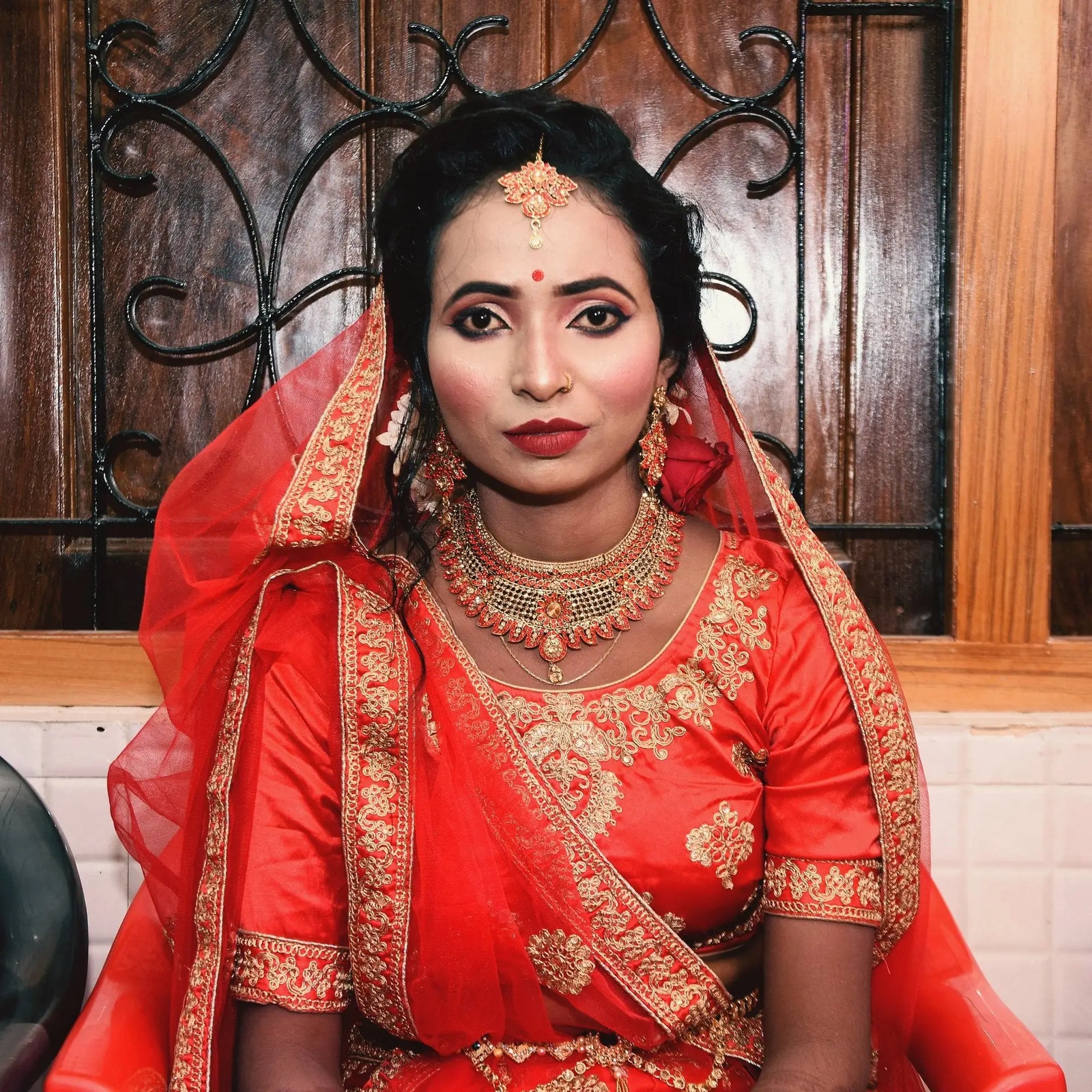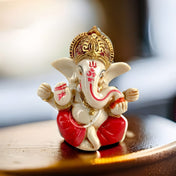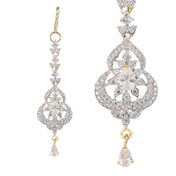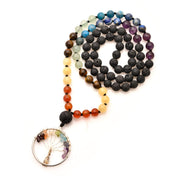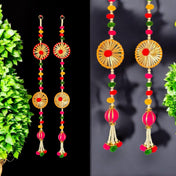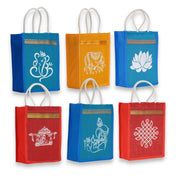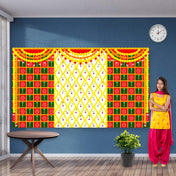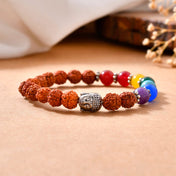Introduction
In Indian culture, the bindi holds deep significance as a traditional adornment worn on the forehead. This symbolic mark represents various aspects of a person's identity and beliefs. Beyond its personal meaning, the bindi has also become a part of gifts and favors in traditional events, such as bindi bags, which combine sustainability with tradition.
This article explores the essence of different bindi colors, revealing their cultural meanings and historical importance within Hindu traditions.
The Red Bindi: Symbol of Love and Marriage in Hinduism 
The red bindi is the most iconic and widely recognized color in the rich tradition of Indian forehead adornment. It holds deep significance in Hindu culture as a symbol of love, passion, and especially marriage.
Meaning of the Red Bindi Symbolic of a Third Eye
Here are some key meanings associated with the red bindi:
- Marital Status: Traditionally, the red bindi is worn by married Hindu women to signify their marital commitment. It serves as a subtle yet powerful emblem of their role within the family and society.
- Cultural Significance: The color red represents energy, strength, and divine feminine power (Shakti), connecting the wearer spiritually to these qualities.
- Occasions for Wearing: Married women often wear red bindis during religious ceremonies, festivals like Karva Chauth and Teej, weddings, or in their everyday lives as an expression of their marital identity. In many communities, a bright red vermilion (sindoor) in the hair parting accompanies the red bindi for added symbolism.
“The red bindi is not just decorative; it embodies the essence of love and devotion within Hindu marital customs.”
Enduring Tradition of a Dot on the Forehead
This traditional practice has endured for centuries, continually affirming the bond between husband and wife while honoring cultural heritage. The red bindi’s vivid presence on a woman’s forehead remains a timeless marker of marriage symbolizing both personal affection and societal values.
For those looking to explore this beautiful tradition further or incorporate it into their lives, you can find a wide range of traditional Indian bindis available online. Whether you're preparing for a wedding or festival, consider enhancing your attire with our stylish bindi bags or gifting our bulk Indian round bindi booklets as wedding favors.
The Black Bindi: Women Wear a Protective Mark Against Negativity
The black bindi symbolism traces back to traditions deeply rooted in spiritual protection. Unlike the red bindi, which signifies love and marriage, the black bindi carries a distinct cultural purpose tied to warding off negative energies and evil influences.
Traditionally, black bindis were applied to infants and young children to shield them from the evil eye, a malevolent glare believed to cause harm or misfortune. Adults, especially women, also wore black bindis during vulnerable times, such as illness or stressful periods, as an amulet against unseen forces. The color black itself is considered absorbing of negative energy, acting as a spiritual barrier.
Culturally, this protective use highlights the layered meanings embedded in bindi practice beyond adornment. The black bindi serves not only as decoration but as a talisman safeguarding personal well-being within Hindu households. This symbolism enriches understanding of how bindis function as both aesthetic and spiritual expressions in Indian tradition.
Wear Bindi in Other Colors: Personal Expression or Regional Influence?

Bindis today are available in a vibrant spectrum of colors beyond the traditional red and black. Shades like gold, blue, green, purple, and even multicolored designs have become popular, especially among younger generations and fashion enthusiasts. These non-traditional bindi colors often serve as an extension of personal style rather than bearers of fixed cultural meanings.
The Significance of the Red Dot on the Forehead or Other Colors: What Different Bindi Colors Traditionally Represent
- Red and black remain the primary colors deeply embedded with symbolic value—red for love and marital status, black for protection.
- Other colors do not carry universally agreed-upon spiritual or social significance across India.
- Many communities embrace diverse hues based on regional customs, festival themes, or aesthetic preferences rather than prescribed symbolism.
Examples include:
- In some regions, gold bindis are favored during celebrations to symbolize prosperity and auspiciousness.
- Blue or green bindis may be chosen simply to complement outfit colors or jewelry, reflecting contemporary fashion trends.
- Purple or pink bindis often appear in urban settings as playful expressions of individuality.
Personalized designs incorporating various colors also highlight how bindis have evolved from strictly cultural markers into versatile adornments. This blend of tradition with modern creativity showcases the rich tapestry of Indian heritage adapting to today’s global lifestyle while honoring its roots.
Regional Variations in Bindi Color Traditions and Bindi as a Fashion Across India
India’s vast cultural diversity is clearly seen in its regional bindi customs, which vary in color, style, and meaning based on local traditions and beliefs. Each state or community has its own unique practices, adding to the cultural richness surrounding the bindi.
1. Bindis Worn by Women in Maharashtra
The red bindi remains significant, especially among married women, symbolizing good luck and marital status. During special occasions, a natural hair cleanser called shikakai is applied along with the bindi, adding to the ritualistic aspect.
2. Bindis as Feminine Energy in West Bengal
Women often wear a large red bindi known as chandrabindu or sindoor, sometimes extending vertically along the center of their foreheads. This style holds deep spiritual significance and is connected to goddess worship.
3. Projecting Spirituality in Tamil Nadu
In Tamil Nadu, bindis are commonly seen as black dots called kunkumam, which are traditionally believed to protect against evil influences. The use of black emphasizes protection rather than indicating marital status.
4. Bindi has Become Popular throughout Rajasthan and Gujarat
During festivals and celebrations in Rajasthan and Gujarat, brightly colored bindis such as gold, green, and blue are more frequently worn. These vibrant colors reflect the liveliness of the region and are expressions of joy rather than fixed meanings.
5. Bindi as a Fashion Accessory in Punjab
In Punjab, women may wear smaller red or maroon bindis on a daily basis but choose more decorative options for weddings or religious ceremonies. This highlights how social context influences bindi styles.
In many tribal communities throughout central and northeastern India, bindis also represent clan identity or age group instead of marital status. These diverse practices demonstrate the significant impact of regional customs on bindi color usage—transforming a simple mark into a powerful symbol of local heritage.
Use of Bindis from Tradition to Fashion Statement: The Evolution of Bindi Usage
The bindi, a traditional Indian forehead adornment, has undergone a remarkable transformation over the years. While it originally held deep religious and marital significance, its usage has now expanded to encompass a wide range of meanings and expressions. In this article, we explore the evolution of bindi usage and how it has transitioned from a symbol of tradition to a global fashion statement.
The Traditional Significance of Decorative Bindis
Historically, the bindi was worn by married Hindu women as a mark of their marital status. It represented their commitment to their husbands and served as a symbol of prosperity and well-being in the household. Additionally, bindis were also associated with various religious beliefs and rituals, with different colors and shapes carrying specific meanings.
The Influence of Bollywood on Hindu Religious Bindi Trends
In recent years, Bollywood celebrities have played a significant role in shaping modern bindi trends. Icons like Aishwarya Rai Bachchan, Priyanka Chopra, and Deepika Padukone have embraced bindis as fashionable accessories, showcasing them on red carpets and international events. Their influence has sparked a renewed interest in this traditional ornament, making it popular among fashion enthusiasts worldwide.
Bindi Come in All Shapes Portraying a Fusion of Cultures
The incorporation of bindis into mainstream fashion represents a beautiful fusion of traditional Indian aesthetics with contemporary trends. Designers and fashion houses are now reimagining bindis in innovative ways, offering a plethora of designs that cater to different preferences and occasions. From intricate handcrafted pieces to minimalist geometric shapes, there is a wide variety of options available for those looking to incorporate bindis into their outfits.
Bindi Representing the Universe: A Symbol of Cultural Pride
As bindis gain popularity beyond Indian borders, they have become symbols of cultural pride for many individuals. Wearing a bindi can be seen as an expression of appreciation for Indian heritage and an acknowledgment of its rich artistic traditions. This shift from tradition to fashion statement highlights the adaptability and timelessness of bindis as symbols in today's globalized world.
The evolution of bindi usage reflects the changing dynamics of culture and fashion. What was once solely associated with religious beliefs and marital customs has now transcended its original purpose to become a versatile accessory embraced by people from all walks of life. Whether worn for personal expression or as part of a larger cultural conversation, bindis continue to hold significance in both traditional and contemporary contexts.
Designer Bindis Worn by Hindu Women: A Fusion of Culture and Contemporary Style
Designer bindis are a perfect blend of traditional culture and modern fashion. They have evolved from being simple decorative pieces to becoming versatile accessories that can be worn on various occasions. Here's a closer look at the significance of designer bindis in today's world:
Wide Range of Designer Bindi Varieties Redefining Historical and Cultural Projection
Today, the market offers an extensive array of designer bindis that cater to various tastes and preferences. These designer bindis range from traditional styles to more modern interpretations, appealing to a diverse audience seeking unique adornments for special occasions or everyday wear.
Embellished Options
Designer bindis often feature intricate embellishments such as shimmering stones, beads, sequins, or even delicate embroidery. These embellished bindis add a touch of glamour and sophistication to any outfit, making them popular choices for weddings, festivals, or other celebratory events.
Significance of Color in Designer Bindis
While traditional bindi colors like red hold specific cultural meanings, designer bindis offer a broader color palette for self-expression and style experimentation. Whether opting for vibrant hues to make a bold statement or subtle shades for a more understated look, the choice of color in designer bindis allows individuals to showcase their personality and creativity through this ancient adornment.
Exploring Bindi Varieties Worn by Married Women
From classic circular bindis to trendy asymmetrical designs or even thematic motifs inspired by nature or geometric patterns, the world of designer bindis is vast and ever-evolving. With endless possibilities for customization and personalization, individuals can find the perfect bindi that resonates with their unique sense of style and aesthetic preferences.
By exploring the realm of designer bindis, one can witness the seamless fusion of cultural heritage with contemporary fashion trends, paving the way for innovative interpretations of this timeless accessory.
Embracing Diversity While Honoring Tradition: LoveNspire's Role in Bindi Culture

LoveNspire plays a vital role in preserving bindi culture by fostering a respectful celebration of Indian heritage while embracing modern ethnic aesthetics. The brand honors The Significance of Color: What Different Bindi Colors Traditionally Represent by offering products that reflect the deep cultural meanings behind bindis.
Key aspects of our approach include:
- Cultural authenticity: Ensuring each bindi design respects traditional symbolism and craftsmanship
- Innovation: Introducing contemporary styles that appeal to today’s diverse audiences without diluting cultural significance
- Community connection: Building bridges between global customers and Indian traditions through storytelling and education
This synergy between tradition and trend exemplifies how LoveNspire nurtures the evolving narrative of bindi culture.
Conclusion
The bindi is an important part of Indian culture, representing both tradition and modern expression. It comes in various colors, each with its own meaning and story. The red bindi, symbolizing love and marriage, remains a significant symbol of respect and devotion. As designer bindis push boundaries by combining cultural heritage with contemporary styles, this evolution continues.
LoveNspire's commitment to preserving and celebrating this rich heritage reflects the true essence of the bindi – a symbol of unity in diversity, connecting the past and present with beauty and grace.
Embrace the bindi – a journey through colors, traditions, and the art of storytelling.

